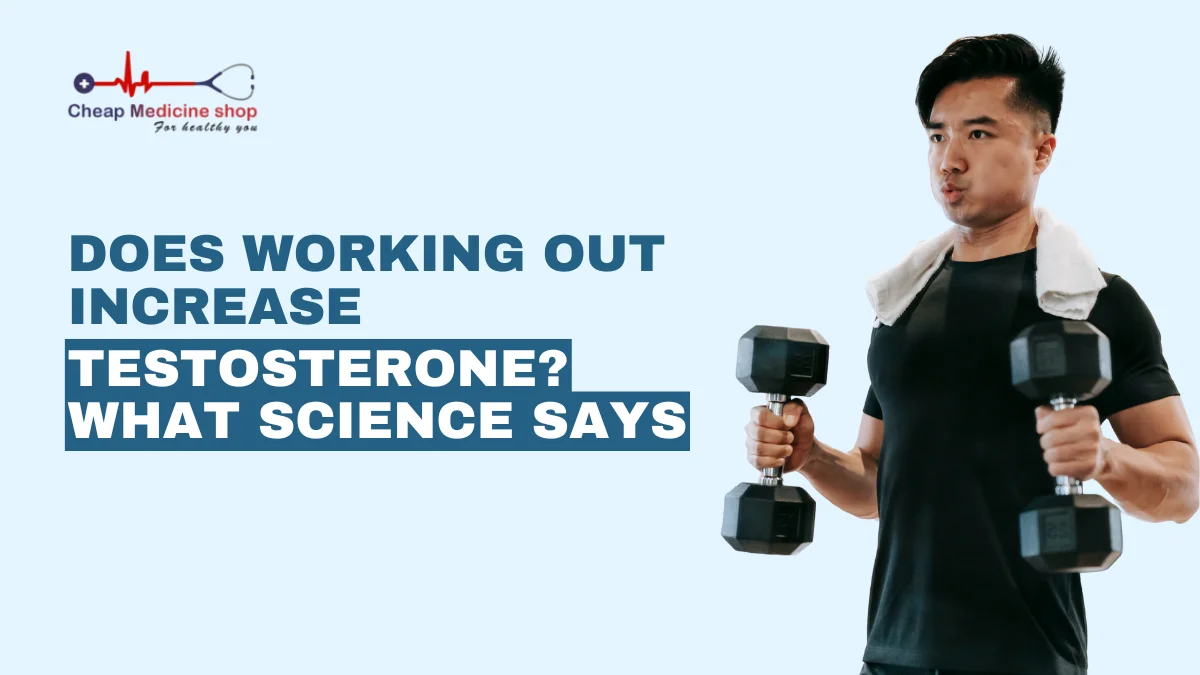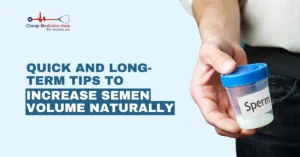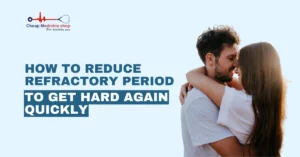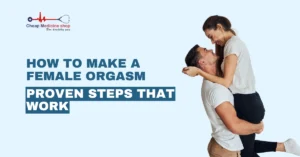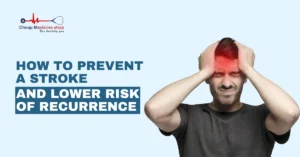Testosterone is a natural hormone that supports muscle growth, sex drive, energy levels, and mood. Having good energy and feeling strong are essential parts of daily life. As you age or face particular health challenges, keeping healthy Testosterone levels becomes more important.
You might be curious about the connection between exercise and Testosterone levels. Does working out increase Testosterone? Exercise influences hormone levels, but the details can be complex.
In this article, we will explore how exercise influences Testosterone, the different types of workouts, and factors that can impact your results. Whether you are a man or woman, young or old, understanding how physical activity effects Testosterone can help you make informed decisions about your fitness and health.
Does working out increase Testosterone?
Yes, working out increases Testosterone levels. Exercise, especially strength training like weightlifting, signals your body to produce more Testosterone, which helps build muscle and boosts energy. Even light activities like jogging or swimming can help over time.
However, balance matters. Overtraining without rest can lower Testosterone. So, consistency, good nutrition, and proper recovery are key.
Furthermore, the extent to which working out increases Testosterone levels depends on several key factors. The following section breaks it down.
Save up to 90% on your medicine bills
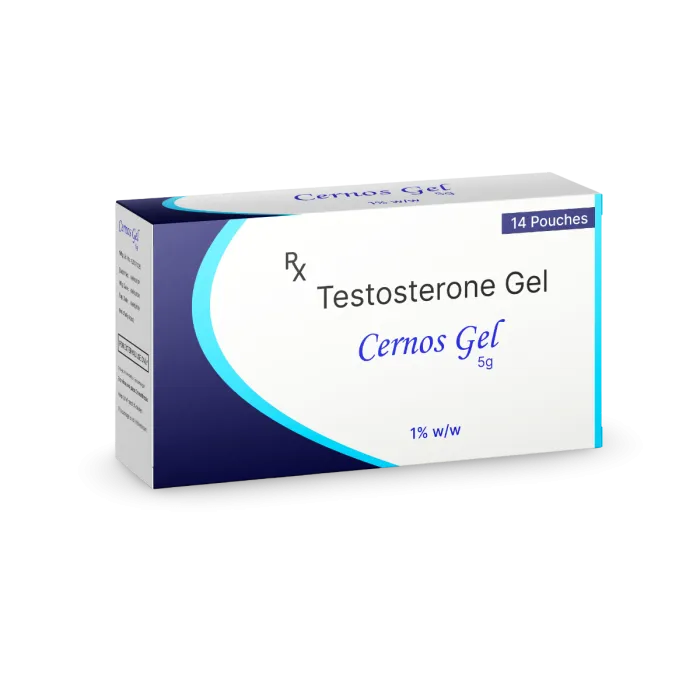
Cernos Gel 1%w/w

Cernos 40 Mg Soft Gelatin Capsule

Sustanon 250 Injection

Carmel Organics Ashwagandha Extract Tablets
Factors affecting how exercise increases Testosterone
Several factors influence how much working out boosts Testosterone. These include the type of exercise, intensity, duration, and other personal factors. Knowing these can help you create an effective fitness plan that supports your hormone levels.
Type of exercise: Which workouts boost Testosterone the most?
Strength training and High‑Intensity Interval Training (HIIT) are the most effective.
- Weightlifting (like squats, deadlifts, and bench presses) significantly stimulates Testosterone, especially with heavy weights and moderate reps.
- HIIT uses short, intense bursts of activity with rest in between. It can raise Testosterone more than long, steady cardio.
Strength workouts 3 to 4 times per week can lead to more stable Testosterone levels over time. This is especially helpful for younger men or those who are overweight or obese, as exercise can reduce body fat, which is linked to Low Testosterone.
Research published in Endocrine Connections in 2017 shows that resistance training can increase Testosterone levels right after intense resistance exercise. Therefore, regular resistance training not only causes short‑term spikes but also promotes better overall hormone balance.
HIIT is more effective at raising Testosterone than long-distance endurance workouts. While running or cycling long distances is great for cardiovascular health, it may temporarily lower Testosterone due to higher stress hormone levels. Mixing in strength or interval workouts can help maintain hormonal balance.
Intensity and duration
The intensity of your workout plan plays a significant role in how much exercise raises Testosterone. Moderate to high-intensity exercise leads to a noticeable increase in Testosterone levels immediately after activity. Mild or low-intensity workouts usually do not have the same effect. The rise in Testosterone typically lasts from 15 minutes up to an hour after exercise and then returns to baseline.
Duration also matters. Short exercise sessions of about 30 to 45 minutes, especially when involving resistance training or HIIT, are sufficient to temporarily boost Testosterone levels. Very long or excessive training without proper rest may reduce Testosterone levels, especially in endurance athletes.
Other factors
Several other factors influence how exercise affects your Testosterone:
- Age: Younger individuals tend to experience a bigger Testosterone boost from exercise than older adults.
- Body weight: People with higher body fat may have lower baseline Testosterone, but can see improvements with regular exercise and weight loss.
- Sex: Men generally have higher Testosterone levels and show a clearer increase after working out. Women also produce Testosterone, but the rise from exercise is smaller and less studied.
- Time of day: Testosterone levels naturally peak in the morning. Working out in the morning may slightly enhance the Testosterone response.
- Fitness level: Beginners may see a larger increase in Testosterone after exercise than highly trained individuals.
Can exercise alone fix Low Testosterone?
No, only exercising can’t fix Low Testosterone. While working out can temporarily raise Testosterone levels, it is not a cure-all. If your Testosterone levels are very low, you may need medical help to restore them properly.
Exercise and Testosterone are connected, but exercise works best when combined with other healthy habits. These include:
- Eating nutritious, balanced food
- Getting enough rest and sleep
- Managing and reducing stress
Combining exercise with these lifestyle changes supports your body’s ability to maintain healthier Testosterone levels. Always consult a doctor if you suspect Low Testosterone symptoms.
Benefits of taking Testosterone when working out
Some individuals consider Testosterone therapy to improve workout results. While medically prescribed Testosterone can help people with low levels, it should only be used under a doctor’s supervision.
Benefits may include:
- Faster muscle growth
- More energy and a better mood
- Better workout recovery
But this only applies to people with a medical need for Testosterone. Never take hormones without medical advice. A doctor must monitor the combination of Low Testosterone treatment and regular exercise.

Conclusion
Does working out increase Testosterone? The answer is yes. The duration or how much T increases depends on multiple factors, including the type, intensity, and exercise duration. Resistance training and High-intensity Interval Training (HIIT) are the most effective at boosting Testosterone, especially when compound movements are involved and at moderate to high intensity.
Regular strength training not only causes temporary spikes but can also help maintain healthier baseline levels over time, particularly in younger men and those with higher body fat. Other influences, such as age, body weight, sex, time of day, and fitness level, also affect the hormone response.
While exercise supports Testosterone production, it is not a standalone solution for Low Testosterone; combining it with proper nutrition, rest, and stress management is crucial. For those with medically low levels, supervised Testosterone therapy may enhance workout benefits but should be used cautiously under professional guidance.

Frequently Asked Questions
Does working out the legs increase Testosterone?
Yes, working out your legs can increase Testosterone. Leg exercises like squats and deadlifts use large muscles, which help your body produce more Testosterone. This boost supports muscle growth and energy. Including leg workouts in your routine can improve your overall hormone health and strength.
Does not ejaculating for 7 days increase Testosterone?
No, not ejaculating for 7 days does not significantly increase your Testosterone levels. While some minor changes might happen briefly, they are usually temporary and do not lead to lasting boosts in Testosterone. Regular healthy habits like exercise and sleep have a bigger impact on hormone levels.
Does a 12-hour fast increase Testosterone?
Yes, a 12-hour fast can slightly increase Testosterone levels for some people. Fasting helps lower insulin and improve hormone balance, which may boost Testosterone. However, the increase is usually slight and temporary. To keep Testosterone healthy, combine fasting with regular exercise and good nutrition.
Does weight training increase Testosterone in females?
Yes, weight training can increase Testosterone in females, but the increase is smaller than in males. It helps women build muscle, improve strength, and support healthy hormone balance. Regular strength exercises benefit overall health without causing significant hormone changes.
Does running kill Testosterone?
No, running does not kill Testosterone. However, very long or intense running sessions can temporarily lower Testosterone levels. Moderate running or jogging usually does not harm Testosterone levels. Staying active with balanced exercise helps keep hormones healthy and supports overall well-being.
Cheap Medicine Shop only refers to credible, authoritative sources for our content. If you’re curious about how we ensure the integrity of our content, we encourage you to read our Content Information Policy.

